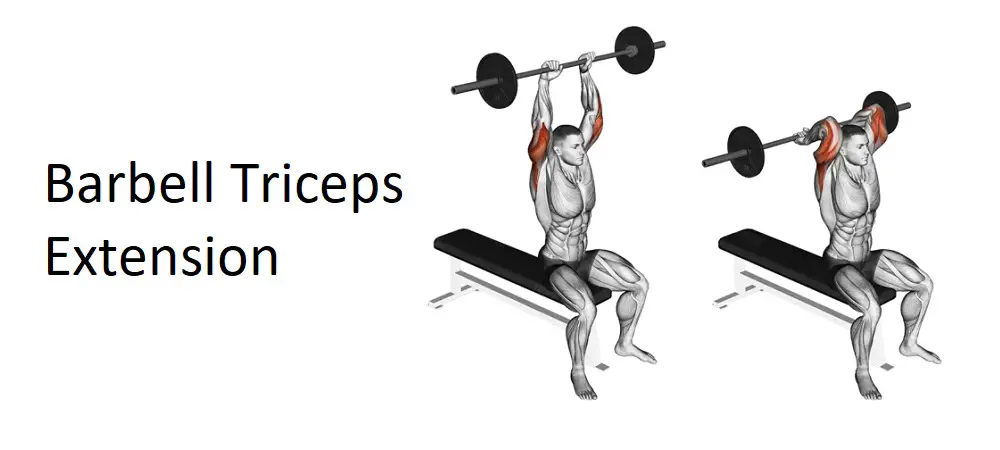Table of Contents
The Cable Alternating Curl is a highly effective arm exercise that targets the biceps while offering a unique twist to standard curls. By using a cable machine, you maintain constant tension throughout the movement, maximizing muscle engagement and promoting growth. Alternating each arm allows for focused isolation, ensuring both arms work equally hard.
Introduction
When it comes to building strong and defined biceps, the Cable Alternating Curl stands out as an excellent choice. This exercise is versatile, accessible, and perfect for lifters of all levels. Unlike free weights, the cable machine ensures consistent tension, challenging your muscles at every point of the movement. This makes it a great addition to any arm-focused workout or full-body routine.
Benefits of Cable Alternating Curl
1. Constant Muscle Tension
- Unlike free weights, the cable machine provides continuous tension throughout the entire range of motion. This ensures that your biceps are constantly engaged, even at the top and bottom of the curl. The consistent resistance helps activate more muscle fibers, contributing to greater muscle growth and endurance over time.
2. Improved Muscle Symmetry
- By alternating arms during the exercise, you allow each bicep to work independently. This helps correct any imbalances in size or strength between your arms, promoting a more symmetrical and proportional appearance. It’s particularly beneficial for athletes and bodybuilders aiming for balanced aesthetics and performance.
3. Joint-Friendly
- The cable setup allows for a smoother, more controlled range of motion compared to free weights like dumbbells or barbells. This minimizes unnecessary strain on your elbows, shoulders, and wrists, making it an ideal option for individuals recovering from joint issues or those looking to reduce wear and tear.
4. Improved Control and Focus
- The guided nature of the cable machine encourages lifters to perform the exercise with precision. It minimizes the risk of momentum or improper technique, enabling you to focus on the contraction and stretch of the biceps. This leads to more effective targeting of the muscle and a better mind-muscle connection.
5. Variety in Arm Training
- Incorporating cables into your arm workout adds variety, which is crucial for avoiding plateaus. The unique angle and resistance pattern of the cable curl introduce a fresh stimulus to the biceps, promoting continued growth and strength development. It also helps diversify your routine, keeping your training engaging and challenging.
How to Perform Cable Alternating Curl
Equipment Needed
- A cable machine with adjustable pulley settings.
- Single-grip handles (one for each side).
Step-by-Step Instructions
Setup
- Prepare the Machine:
Attach single-grip handles to the lowest pulley setting on both sides of the cable machine. Ensure the cables are equally adjusted for balanced resistance. - Position Yourself:
- Stand directly in the middle of the cable machine, equidistant from both handles.
- Grip one handle in each hand, with your palms facing forward (supinated grip).
- Stance and Posture:
- Assume a stable stance with your feet shoulder-width apart.
- Engage your core for stability, keep your chest upright, and maintain a slight bend in your knees.
- Let your arms hang naturally at your sides, keeping your elbows close to your torso to isolate the biceps.
Execution
- Begin with One Arm:
- Slowly curl one handle upward by bending your elbow.
- Keep your upper arm stationary and focus on contracting the biceps as you lift.
- Squeeze at the Top:
- Pause at the peak of the curl, holding for 1–2 seconds.
- Actively squeeze your biceps for maximum engagement.
- Lower with Control:
- Gradually extend your arm back to the starting position.
- Avoid letting the handle snap back; control the movement to maintain tension in the biceps.
- Switch Arms:
- Repeat the same curling motion with your opposite arm.
- Continue Alternating:
- Alternate between arms in a steady, controlled manner for the desired number of repetitions.
- Maintain proper form throughout the set, avoiding momentum or excessive swinging.
Repetitions and Sets
- For Strength: Perform 3–4 sets of 6–8 reps per arm. Use heavier weights while maintaining control.
- For Muscle Growth (Hypertrophy): Perform 3–4 sets of 10–12 reps per arm with moderate weight. Focus on achieving a full range of motion and a strong contraction.
- For Endurance: Perform 3–4 sets of 12–15 reps per arm with lighter weights. Emphasize controlled movements to build stamina and refine technique.
Additional Tips for Success
- Maintain Proper Form:
- Keep your torso still and avoid leaning back or using momentum to lift the weights.
- Focus on isolating your biceps for optimal muscle engagement.
- Control the Tempo:
- Use a slow, controlled motion to maximize time under tension and reduce the risk of injury.
- Breathing:
- Exhale as you curl the handle upward.
- Inhale as you lower it back down.
- Adjust Resistance:
- If the exercise feels too easy or difficult, adjust the weight or cable tension accordingly.
- Incorporate Progression:
- Gradually increase the weight or repetitions over time to continue challenging your muscles and promoting growth.
By following these detailed instructions, the cable alternating curl can become an effective addition to your arm workout routine, targeting the biceps while minimizing joint strain and improving overall muscle symmetry.
Common Mistakes to Avoid
1. Swinging the Arms
- Avoid using momentum to lift the weight; focus on controlled movements.
2. Flared Elbows
- Keep your elbows close to your torso to maintain proper form and isolate the biceps.
3. Leaning Back
- Engage your core to prevent leaning back, which reduces effectiveness and increases injury risk.
4. Rushing the Movement
- Perform each rep slowly and deliberately for maximum muscle engagement.
Muscles Worked in Cable Alternating Curl
Primary Muscle Group
- Biceps Brachii
- Both the long head and short head of the biceps are heavily engaged.
Secondary Muscles
- Brachialis: Assists in elbow flexion.
- Forearms: Work to stabilize the wrists and grip the handles.
Variations of Cable Alternating Curl
1. Single-Arm Cable Curl
- Focus entirely on one arm before switching to the other for a more concentrated effort.
2. Cable Rope Alternating Curl
- Use a rope attachment for a neutral grip, which engages the brachialis more effectively.
3. Incline Cable Alternating Curl
- Perform the exercise seated on an incline bench for a greater stretch on the biceps.
4. Reverse Grip Cable Alternating Curl
- Use an overhand grip to shift focus to the brachialis and forearms.
5. Cable Preacher Alternating Curl
- Use a preacher pad to limit movement and emphasize the biceps.
Incorporating Cable Alternating Curl into Your Routine
Sample Biceps Workout
- Barbell Curl: 3×8–10
- Cable Alternating Curl: 3×10–12 per arm
- Hammer Curl: 3×12–15
- Concentration Curl: 3×10 per arm
Training Frequency
- Include biceps-focused exercises 1–2 times per week for balanced development.
Safety Considerations
1. Choose the Right Weight
- Start with a manageable weight to maintain proper form throughout the exercise.
2. Warm Up Properly
- Perform dynamic stretches and light cardio to prepare your muscles and joints.
3. Avoid Overloading
- Overloading can lead to poor form and increase the risk of injury.
4. Use Proper Equipment Setup
- Adjust the cable machine to ensure the handles are at the correct height.
Video Demonstration
For a step-by-step visual guide, check out this Video on Cable Alternating Curl to ensure proper technique.
FAQs
1. Can beginners perform Cable Alternating Curl?
- Yes, this exercise is beginner-friendly when performed with light weights.
2. How much weight should I use?
- Start with 10–20% of your body weight and adjust as needed.
3. Is this exercise better than dumbbell curls?
- Both have their benefits. Cable curls provide constant tension, while dumbbells offer more freedom of movement.
4. Can I perform this exercise seated?
- Yes, performing it seated can reduce momentum and increase isolation.
5. How often should I train biceps?
- Train biceps 1–2 times per week, ensuring at least 48 hours of rest between sessions.
Conclusion
The Cable Alternating Curl is a highly effective exercise for building strong, symmetrical, and defined biceps. With constant tension and controlled movements, this exercise is a must-have in any arm workout routine. By incorporating it into your regimen, you’ll not only enhance your arm strength but also improve muscle balance and aesthetics.
Remember to focus on proper form, use a manageable weight, and progress gradually to achieve the best results from this dynamic biceps exercise.







